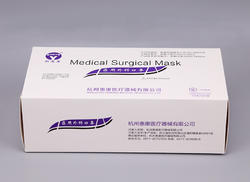1. The fiber fineness of the filter material
It is expressed as fiber diameter size in microns. The fiber diameter of the filter material generally used for dust masks is preferably less than 5 microns. The diameter of the commonly used polypropylene microfiber is 4.0 microns, and the fiber diameter of the perchloroethylene microfiber filter material is less than 2 microns. The suction of the fiber is positively related to the dust blocking efficiency, that is, the finer the fiber, the higher the dust blocking efficiency.
2. The composition of the filter material
The organizational structure of the filter material is related to the production process of the filter material. At present, the forming processes of the synthetic fiber non-woven filter material mainly include acupuncture method, direct injection method, bonding method, hot melt method, etc. The hot melt injection molding method is mostly used, and in this method, two or more kinds of fiber materials can be used for composite molding, which improves the dust resistance efficiency, and is relatively soft and has good air permeability.
3. The chargeability of the filter material
The size of the filter material belt is positively correlated with the composition efficiency, that is, the larger the electrostatic charge, the higher the dust blocking efficiency.

When dust passes through the filter media, the following occurs:
(1) Collision retention: When the particle size of the dust is larger than the gap between the fibers of the filter material, the dust collides with the surface of the filter material, changes direction due to the reaction of inertia and force, settles and adheres to the surface of the filter material. Hooking effect: There are burrs on the fibers. When the dust passes through the filter material, it is hooked by the burrs on the fibers, preventing the particles from penetrating.
(2) Multi-layer filtration: The filter material is made of superfine fibers lapped and woven into a net, and it is a multi-level "three-dimensional structure". When the dust passes through the filter material, it is trapped layer by layer.
(3) Electrostatic effect: The filter material has an electrostatic charge, which repels dust particles of relatively polar nature, while attracting dust particles of opposite sex, that is, capturing dust.















